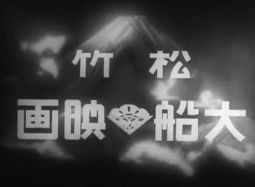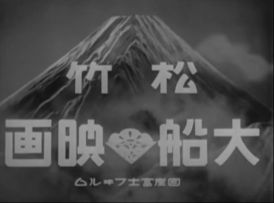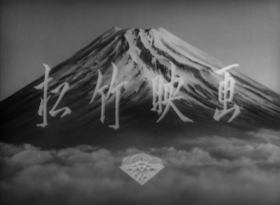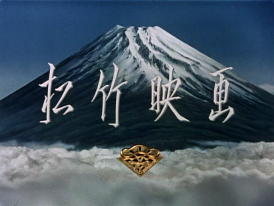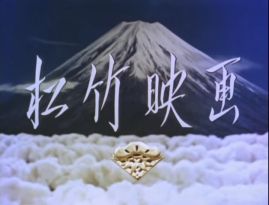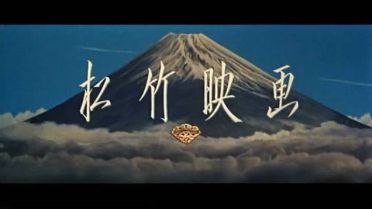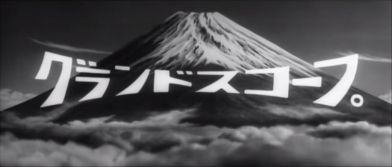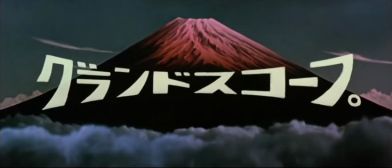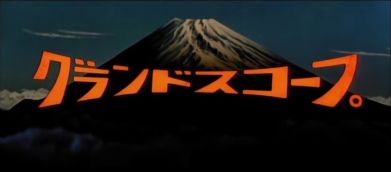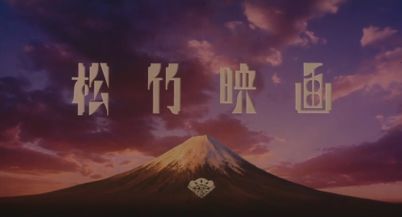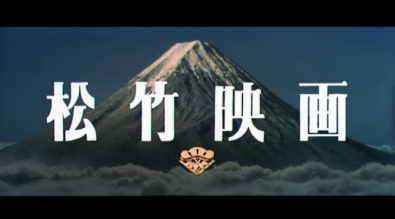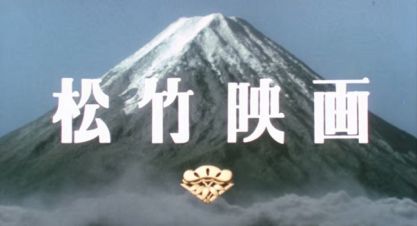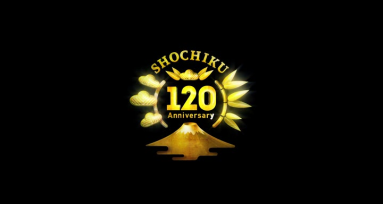Shochiku (Japan)
Jump to navigation
Jump to search
Logo descriptions and captures by kidinbed, StephenCezar15, Yukabacera, Liwakip, Gilblitz112, CokeFan12 and jupiterboy
Logo videos by quaestor1968, Nlangkirby135, ArhiVid, TEAMLABNET, and shimomov
Shochiku Kinema
Background: Shochiku was founded in 1895 as a kabuki theater company. Its name was read as "Matsutake" after the founders, Matsujirou Shirai and Takejirou Otani, until 1937, when it was officially changed to "Shochiku", the Chinese reading of the name, as opposed to the initial Japanese. The film production division, Shochiku Kinema, was established in 1920.
1st Logo
(1929)
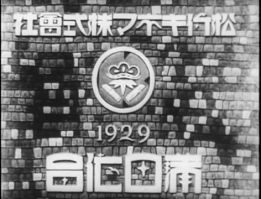 <embed allowfullscreen="true" height="207" src="http://wikifoundrytools.com/wiki/closinglogos/widget/youtubevideo/00d0427d2c278d4f0fac425862fcc11a40fc1a46" type="application/x-shockwave-flash" width="252" wmode="transparent"/>
<embed allowfullscreen="true" height="207" src="http://wikifoundrytools.com/wiki/closinglogos/widget/youtubevideo/00d0427d2c278d4f0fac425862fcc11a40fc1a46" type="application/x-shockwave-flash" width="252" wmode="transparent"/>
FX/SFX: None.
Music/Sounds: None.
Availability: Seen on films made by Shochiku Kinema in 1929, such as Yasujiro Ozu's Days of Youth and A Straightforward Boy.
Editor's Note: None.
2nd Logo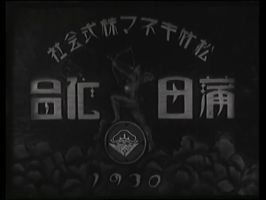 <embed allowfullscreen="true" height="204" src="http://wikifoundrytools.com/wiki/closinglogos/widget/youtubevideo/431497c562c4de691ec36c1362a9685436ad58d0" type="application/x-shockwave-flash" width="247" wmode="transparent"/>
<embed allowfullscreen="true" height="204" src="http://wikifoundrytools.com/wiki/closinglogos/widget/youtubevideo/431497c562c4de691ec36c1362a9685436ad58d0" type="application/x-shockwave-flash" width="247" wmode="transparent"/>
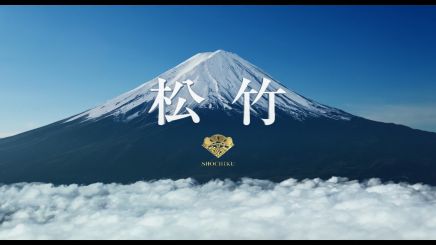 <embed align="bottom" height="244" src="http://wikifoundrytools.com/wiki/closinglogos/widget/genericvideo/16fabb2de9179f06d5d6518e74b0cd2035349900" type="application/x-shockwave-flash" width="245" wmode="transparent"/>
<embed align="bottom" height="244" src="http://wikifoundrytools.com/wiki/closinglogos/widget/genericvideo/16fabb2de9179f06d5d6518e74b0cd2035349900" type="application/x-shockwave-flash" width="245" wmode="transparent"/>
Trivia: The logo was designed by VFX firm Imagica West.
FX/SFX: According to <a class="external" href="http://www.imagicawest.com/openingrogo.pdf" rel="nofollow" target="_blank">the official press release for the logo</a>, it's live-action footage of Mount Fuji enhanced with CGI.
Music/Sounds: None or the opening theme of the film
Availability: Seen on Shochiku films starting with The Next Generation Patlabor Chapter 7 on January 10, 2015. Outside of Japan, the only film with US releases bearing this logo, as of the end of 2015, is Love Live! The School Idol Movie. Also appears onMagical Girl Lyrical Nanoha Reflection and Detonation.
Editor's Note: None.
Logo: TBA.
FX/SFX: None.
Music/Sounds: None
Availability: Precedes the 12th logo on several films made in 2015.
Editor's Note: It was a logo to celebrate their 120th anniversary of the company.
Logo videos by quaestor1968, Nlangkirby135, ArhiVid, TEAMLABNET, and shimomov
Shochiku Kinema
Background: Shochiku was founded in 1895 as a kabuki theater company. Its name was read as "Matsutake" after the founders, Matsujirou Shirai and Takejirou Otani, until 1937, when it was officially changed to "Shochiku", the Chinese reading of the name, as opposed to the initial Japanese. The film production division, Shochiku Kinema, was established in 1920.
1st Logo
(1929)
 <embed allowfullscreen="true" height="207" src="http://wikifoundrytools.com/wiki/closinglogos/widget/youtubevideo/00d0427d2c278d4f0fac425862fcc11a40fc1a46" type="application/x-shockwave-flash" width="252" wmode="transparent"/>
<embed allowfullscreen="true" height="207" src="http://wikifoundrytools.com/wiki/closinglogos/widget/youtubevideo/00d0427d2c278d4f0fac425862fcc11a40fc1a46" type="application/x-shockwave-flash" width="252" wmode="transparent"/>Nickname: "The Brick Wall"
Logo: On a brick wall, we see the name of the company: 松竹キネマ株式會社 (Shochiku Kinema Co., Ltd.). Below that is the Shochiku Kinema symbol and the year 1929, and on the bottom of the screen is the name of the studio Kamata Films (蒲田映画), used by Shochiku.
FX/SFX: None.
Music/Sounds: None.
Availability: Seen on films made by Shochiku Kinema in 1929, such as Yasujiro Ozu's Days of Youth and A Straightforward Boy.
Editor's Note: None.
2nd Logo
(1930)
 <embed allowfullscreen="true" height="204" src="http://wikifoundrytools.com/wiki/closinglogos/widget/youtubevideo/431497c562c4de691ec36c1362a9685436ad58d0" type="application/x-shockwave-flash" width="247" wmode="transparent"/>
<embed allowfullscreen="true" height="204" src="http://wikifoundrytools.com/wiki/closinglogos/widget/youtubevideo/431497c562c4de691ec36c1362a9685436ad58d0" type="application/x-shockwave-flash" width="247" wmode="transparent"/>Nickname: "The Archer"
Logo: Over a set of clouds on a dark background, an archer is seen standing on the Shochiku Kinema symbol about to shoot an arrow. The same text from before is seen, with 松竹キネマ株式會社 arched above the archer, Kamata Films' company name on the sides of the archer, as well as the year 1930 below everything else.
FX/SFX: None.
Music/Sounds: None.
Availability: Seen on films made by Shochiku Kinema in 1930.
Editor's Note: The dark background and the archer may creep some. The silence also doesn't help, either, and the logo is very shaky.
3rd Logo
(1931)
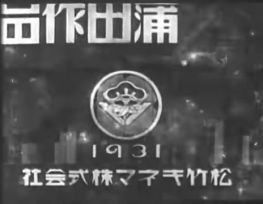 <embed allowfullscreen="true" height="207" src="http://wikifoundrytools.com/wiki/closinglogos/widget/youtubevideo/3c59e10879b1ec446064b27a8f4eb65e8697e396" type="application/x-shockwave-flash" width="252" wmode="transparent"/>
<embed allowfullscreen="true" height="207" src="http://wikifoundrytools.com/wiki/closinglogos/widget/youtubevideo/3c59e10879b1ec446064b27a8f4eb65e8697e396" type="application/x-shockwave-flash" width="252" wmode="transparent"/>
4th Logo
(1932)
Logo: On a stone background featuring an abstract human figure holding a sword on the left side and an image of a lion lying down, with the year 1932 written on it, toward the bottom. The name of the Kamata Films studio is on top of the screen. Below that is the Shochiku Kinema symbol. Below the lion is the name of the Shochiku Kinema company.
Variant: A visually similar but slightly different logo exists. The only things that differ are the shape of the year 1932 and the positioning of the text.
FX/SFX: None.
Music/Sounds: None or the opening theme of the film.
Availability: Seen on films made by Shochiku Kinema in 1932, such as Yasujiro Ozu's Where Now Are the Days of Youth and Mikio Naruse's No Blood Relation.
Editor's Note: None.
5th Logo
(1933)
Logo: On a gray background, ornate decorations can be seen. In a field in the center of the decorations are the symbol of the main Shochiku company and the year 1933. Above that is the name of the Kamata Films studio. Below the decorations is the name of the Shochiku Kinema company.
Variant: A very similar version exists, featuring different decorations and the name of the Kamata Films studio written in a more delicate way.
FX/SFX: None.
Music/Sounds: None or the opening theme of the film.
Availability: Seen on many films made by Shochiku Kinema in 1933.
Editor's Note: None.
6th Logo
(1934)
Logo: A large representation of an eagle on a honeycomb-like background can be seen. The year 1934 and the symbol of the main Shochiku company can be seen to the left of the eagle's head. On his wings are the name of the Kamata Films studio and the Shochiku Kinema company.
FX/SFX: None.
Music/Sounds: None or the opening theme of the film.
Availability: Seen on many films made by Shochiku Kinema in 1934.
Editor's Note: None.
7th Logo
(1935-1936)
Logo: The logo consists of a representation of a warrior riding a horse, holding a spear and shield. On the shield is the year of production (1935 or 1936) and the symbol of the Shochiku Kinema company. Above the image is the name of the Kamata Films studio, and below is the name of the Shochiku Kinema company.
FX/SFX: None.
Music/Sounds: None or the opening theme of the film.
Availability: Seen on films made by Shochiku Kinema in 1935 and 1936. This was the last logo used by Shochiku Kinema to feature the name of Kamata Films, before the studio was closed down in 1936.
Editor's Note: None.
8th Logo
(1936)
Logo: The logo opens with a view of Mt. Fuji with moving clouds in front of it. In the center of the screen, the name of Shochiku's Ōfuna Films studio (大船映画) can be seen. The Shochiku Kinema symbol separates the name in two, and around it are the words AN OHFUNA PICTURE. On the bottom, the name of the Shochiku Kinema company can be seen.
FX/SFX: None.
Music/Sounds: None or the opening theme of the film.
Availability: Presumably seen on films produced by Shochiku Kinema at the Ōfuna Films studio in 1936.
Editor's Note: None.
_______________________________________________________________
Shochiku Films
Background: In 1937, Shochiku Kinema (film) and Shochiku Kōgyō (theater) merged into one company: Shochiku Films (松竹映画). From this point, films were mostly released under the Shochiku Films name - however, some were occasionally released under the Ōfuna Films name, but without the Shochiku Kinema byline.
1st Logo (Ōfuna Films)
(1936-1940?)
1st Logo
(1937-1943, 1945-1946)
Logo: The logo opens to a scene of the symbol of the consolidated Shochiku company on a spinning paper fan or wheel. The characters 松竹映畫 (meaning "Shochiku Films") "flip" into the frame above the fan. These are followed by the characters 製作 on the bottom left of the fan and 提供 on the bottom right (meaning "production" and "offering/sponsoring" respectively, here used in the sense of the English "presents"). Then, the company's full name appears below the fan, and the image fades out.
FX/SFX: The fan spinning and the characters appearing.
Music/Sounds: None or the opening theme of the film.
Availability: Seen on films made by Shochiku Films between 1937 and 1943, and also some post-war productions from 1945 and 1946.
Editor's Note: None.
2nd Logo
(1943-1944)
Logo: The logo opens with Mt. Fuji with moving clouds in front of it. The Shochiku Films name is in the center of the screen. On the bottom of the screen there is some text. (TBA)
FX/SFX: None.
Music/Sounds: None or the opening theme of the film.
Availability: Seen on Shochiku's wartime productions made in 1943 and 1944.
Editor's Note: None.
3rd Logo
(1947)
Logo: The logo opens with a bouquet of flowers and a glass-like ring spinning around it. Five stars and the words Shochiku Films can be seen on the ring. Below the bouquet is the year 1947, written in transparent numbers.
FX/SFX: The ring spinning around the bouquet.
Music/Sounds: None or the opening theme of the film.
Availability: Seen on Shochiku productions from 1947.
Editor's Note: None.
4th Logo
(1948)
<iframe frameborder="0" height="205" src="http://wikifoundrytools.com/wiki/closinglogos/widget/genericvideo/451994f2cd172ab0825bc244c05944ef99ca4345" width="367"></iframe><iframe frameborder="0" height="205" src="http://wikifoundrytools.com/wiki/closinglogos/widget/genericvideo/0e33516e9acbccfed53a834cb1682725e89a580d" width="367"></iframe>
Logo: On a background with stars that shine occasionally, the Shochiku symbol can be seen. A bouquet of flowers balancing on a spinning globe, lit from the back, appears behind it. The symbol retreats into the background and disappears when it reaches the bouquet. Then, the words "Shochiku Films" appear above the bouquet. The year 1948 on the globe appears from the right and the globe stops spinning when the numbers are directly under the bouquet.
FX/SFX: The stars shining, the symbol moving toward the background, the globe spinning, the name appearing.
Music/Sounds: Various different fanfares, depending on the film.
Availability: Seen on Shochiku productions from 1948.
Editor's Note: None.
5th Logo
(1949-1950)
Logo: The logo opens with the camera zooming in on a spinning globe on a background of shining stars. When it gets close, the zooming stops and a light appears behind the globe. The words "Shochiku Films" "flip" in from the bottom of the screen and the Shochiku symbol appears beneath them. Then, the year 1949 or 1950 appears below the symbol and the logo fades out.
Variant: On the 1950 variant, the words are written in a slightly different way, and the year is written using different numbers. The symbol is also larger when it appears.
FX/SFX: The zooming, the globe spinning, the stars shining, the light appearing, the words, symbol and year appearing.
Music/Sounds: None or the opening theme of the film.
Availability: Seen on Shochiku productions from 1949 and 1950.
6th Logo
(1951)
Logo: The logo opens with a globe spinning on top of clouds. It stops spinning and the words "Shochiku Films" appear. Then, the Shochiku symbol and the year 1951 appear below the words and the logo fades out.
Variant: A variation exists where the globe is more zoomed in, and doesn't stop spinning during the logo.
FX/SFX: The globe spinning, the words, symbol and year appearing.
Music/Sounds: None, a custom fanfare depending on the film, or the opening theme of the film.
Availability: Seen on some Shochiku productions from 1951. Shochiku began using the famous Mt. Fuji logo during 1951, so these logos are a bit rarer.
Editor's Note: None to low.
7th Logo
(1951-1980)
Nicknames: "Mt. Fuji IV", "Fuji-san IV", "松竹", "松竹映画" "The New Mount Fuji"
Logo:We picture of Mount Fuji with moving clouds. The kanji "松竹映画" (which mean "Shochiku Films") and a small fan (Shochiku's emblem) fade in.
Variant:On Shochiku films produced in GrandScope (which is similar to CinemaScope), the katakana "グランドスコープ" (which means "GrandScope") zooms in. After a while, the text fades out before the company name and fan fade in.
FX/SFX: The moving clouds and the fading in. Nice effects for its time, though...
Music/Sounds: Usually silent. On some movies dubbed by American International Television, that logo's 1967 theme was used.
Availability: Seen on a lot of Japanese movies and tokusatsu of the time period. Shochiku released some very famous films directed by Yasujiro Ozu (up to and including his final film in 1962, An Autumn Afternoon) among others, so be on the lookout.
Editor's Note: None.
8th Logo
Music/Sounds: TBA
Editor's Note: None.
10th Logo
(2003-2014)
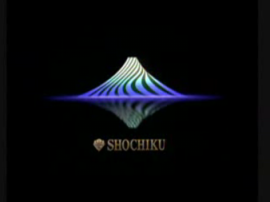 <embed height="190" src="http://wikifoundrytools.com/wiki/closinglogos/page/Shochiku+%28Japan%29/widget/youtubevideo/c75573c39ad7d14706045371c7034c346bf6be4a" type="application/x-shockwave-flash" width="235" wmode="transparent"/>
<embed height="190" src="http://wikifoundrytools.com/wiki/closinglogos/page/Shochiku+%28Japan%29/widget/youtubevideo/c75573c39ad7d14706045371c7034c346bf6be4a" type="application/x-shockwave-flash" width="235" wmode="transparent"/>
Nicknames: "Fuji Northern Lights", "Aurora Borealis", "Aurora Mt. Fuji"
Logo: The logo opens with the aurora borealis or northern lights. They ripple and transform into a stylized Mount Fuji. A gold version of the new Shochiku logo (the Shochiku fan and the company's name in a Times-like font) fades in. The logo shines and the top of Mt. Fuji fades from blue to yellow.
FX/SFX: Everything in gorgeous CGI.
Music/Sounds: None or the opening theme of the movie.
Availability: Seen on Shochiku films from the era. Outside of Japan, it is usually kept intact on US releases of Japanese films and anime released by Shochiku such as the 2003 version of Zatoichi (distributed by Miramax), Tsubasa Chronicle/xxxHoliC: The Movies, Vexille, Shinobi: Heart Under Blade (all distributed by Funimation) and the K-On! movie (distributed by Sentai Filmworks).
Editor's Note: None, this logo is professional.
11th Logo
(December 2014)
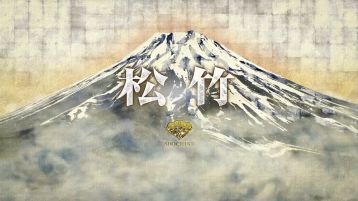
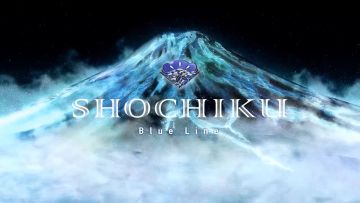
<iframe frameborder="0" height="205" src="http://wikifoundrytools.com/wiki/closinglogos/widget/genericvideo/b797b46204d8e4bd85e022c2d2ebfc1fe770d9dd" width="367"></iframe><iframe frameborder="0" height="205" src="http://wikifoundrytools.com/wiki/closinglogos/widget/genericvideo/f500f9a472ddbc46885aeeab08268a41f1999dad" width="367"></iframe>
(1931)
 <embed allowfullscreen="true" height="207" src="http://wikifoundrytools.com/wiki/closinglogos/widget/youtubevideo/3c59e10879b1ec446064b27a8f4eb65e8697e396" type="application/x-shockwave-flash" width="252" wmode="transparent"/>
<embed allowfullscreen="true" height="207" src="http://wikifoundrytools.com/wiki/closinglogos/widget/youtubevideo/3c59e10879b1ec446064b27a8f4eb65e8697e396" type="application/x-shockwave-flash" width="252" wmode="transparent"/>Nickname: "The Dark City"
Logo: The logo opens to a scene of a city set in stone with a giant man standing above it, his leg raised. The name of the Kamata Films studio is in the upper left corner. The Shochiku Kinema symbol is in the center of the screen. Below it is the name of the Shochiku Kinema company.
FX/SFX: None.
Music/Sounds: None or the opening theme of the film.
Availability: Seen on films made by Shochiku Kinema in 1931, such as Yasujiro Ozu's Tokyo Chorus.
Editor's Note: None.
FX/SFX: None.
Music/Sounds: None or the opening theme of the film.
Availability: Seen on films made by Shochiku Kinema in 1931, such as Yasujiro Ozu's Tokyo Chorus.
Editor's Note: None.
4th Logo
(1932)
<embed allowfullscreen="true" height="207" src="http://wikifoundrytools.com/wiki/closinglogos/widget/youtubevideo/089791ffc21ffe038cacfb127a03776dbe3632c6" type="application/x-shockwave-flash" width="252" wmode="transparent"/><embed allowfullscreen="true" height="207" src="http://wikifoundrytools.com/wiki/closinglogos/widget/youtubevideo/7219aa0af54643d2755f5ac60ce46c8d5bafbe33" type="application/x-shockwave-flash" width="252" wmode="transparent"/>
Nickname: "The Lion"
Variant: A visually similar but slightly different logo exists. The only things that differ are the shape of the year 1932 and the positioning of the text.
FX/SFX: None.
Music/Sounds: None or the opening theme of the film.
Availability: Seen on films made by Shochiku Kinema in 1932, such as Yasujiro Ozu's Where Now Are the Days of Youth and Mikio Naruse's No Blood Relation.
Editor's Note: None.
5th Logo
(1933)
<embed allowfullscreen="true" height="207" src="http://wikifoundrytools.com/wiki/closinglogos/widget/youtubevideo/78fc43b20acc83b3e09bfe3d983f72ec9ffd6603" type="application/x-shockwave-flash" width="252" wmode="transparent"/><embed allowfullscreen="true" height="207" src="http://wikifoundrytools.com/wiki/closinglogos/widget/youtubevideo/50dc9ec39c724eddebdd81a942df7492ffdbd40b" type="application/x-shockwave-flash" width="252" wmode="transparent"/>
Nickname: "The Ornate Shochiku"
Variant: A very similar version exists, featuring different decorations and the name of the Kamata Films studio written in a more delicate way.
FX/SFX: None.
Music/Sounds: None or the opening theme of the film.
Availability: Seen on many films made by Shochiku Kinema in 1933.
Editor's Note: None.
6th Logo
(1934)
<embed allowfullscreen="true" height="207" src="http://wikifoundrytools.com/wiki/closinglogos/widget/youtubevideo/caf8936d9f1c7a976514fafa999cd08fa31bed54" type="application/x-shockwave-flash" width="252" wmode="transparent"/>
Nickname: "The Eagle"
FX/SFX: None.
Music/Sounds: None or the opening theme of the film.
Availability: Seen on many films made by Shochiku Kinema in 1934.
Editor's Note: None.
7th Logo
(1935-1936)
<embed allowfullscreen="true" height="207" src="http://wikifoundrytools.com/wiki/closinglogos/widget/youtubevideo/52d2dbebf2e04640f0c473bc91423395b2d575ed" type="application/x-shockwave-flash" width="252" wmode="transparent"/><embed allowfullscreen="true" height="207" src="http://wikifoundrytools.com/wiki/closinglogos/widget/youtubevideo/887b3c0e48f5946f94ed048152eb3af9794c4b67" type="application/x-shockwave-flash" width="252" wmode="transparent"/>
Nickname: "The Warrior and the Horse"
Logo: The logo consists of a representation of a warrior riding a horse, holding a spear and shield. On the shield is the year of production (1935 or 1936) and the symbol of the Shochiku Kinema company. Above the image is the name of the Kamata Films studio, and below is the name of the Shochiku Kinema company.
FX/SFX: None.
Music/Sounds: None or the opening theme of the film.
Availability: Seen on films made by Shochiku Kinema in 1935 and 1936. This was the last logo used by Shochiku Kinema to feature the name of Kamata Films, before the studio was closed down in 1936.
Editor's Note: None.
8th Logo
(1936)
<embed allowfullscreen="true" height="207" src="http://wikifoundrytools.com/wiki/closinglogos/widget/youtubevideo/aada9d99b64f706b43bf2ec3490c876120bb030e" type="application/x-shockwave-flash" width="252" wmode="transparent"/>
Nicknames: "Mt. Fuji", "Fuji-san"
Logo: The logo opens with a view of Mt. Fuji with moving clouds in front of it. In the center of the screen, the name of Shochiku's Ōfuna Films studio (大船映画) can be seen. The Shochiku Kinema symbol separates the name in two, and around it are the words AN OHFUNA PICTURE. On the bottom, the name of the Shochiku Kinema company can be seen.
FX/SFX: None.
Music/Sounds: None or the opening theme of the film.
Availability: Presumably seen on films produced by Shochiku Kinema at the Ōfuna Films studio in 1936.
Editor's Note: None.
_______________________________________________________________
Shochiku Films
Background: In 1937, Shochiku Kinema (film) and Shochiku Kōgyō (theater) merged into one company: Shochiku Films (松竹映画). From this point, films were mostly released under the Shochiku Films name - however, some were occasionally released under the Ōfuna Films name, but without the Shochiku Kinema byline.
1st Logo (Ōfuna Films)
(1936-1940?)
<iframe frameborder="0" height="185" src="http://wikifoundrytools.com/wiki/closinglogos/widget/genericvideo/aa8da146b3f1b6eb6c7c1a986d1b22592e7ac672" width="330"></iframe>
Nicknames: "Mt. Fuji II", "Fuji-san II"
Logo: An updated version of the last logo, with more clouds. In the center of the screen, Shochiku's name and the name of the Ōfuna Films studio, separated into two halves by the symbol of the newly-merged company, can be seen.
FX/SFX: The moving clouds.
Music/Sounds: None or the opening theme of the film.
Availability: Occasionally seen on films made by Shochiku at the Ōfuna Films studio before WWII.
Editor's Note: None.
FX/SFX: The moving clouds.
Music/Sounds: None or the opening theme of the film.
Availability: Occasionally seen on films made by Shochiku at the Ōfuna Films studio before WWII.
Editor's Note: None.
1st Logo
(1937-1943, 1945-1946)
<iframe frameborder="0" height="205" src="http://wikifoundrytools.com/wiki/closinglogos/widget/genericvideo/c3710c7d5347b55a77d0809b51722dd207d023d3" width="367"></iframe>
Nicknames: "The Paper Fan", "Spinning Paper Fan", "The Shochiku Paper Fan"
Logo: The logo opens to a scene of the symbol of the consolidated Shochiku company on a spinning paper fan or wheel. The characters 松竹映畫 (meaning "Shochiku Films") "flip" into the frame above the fan. These are followed by the characters 製作 on the bottom left of the fan and 提供 on the bottom right (meaning "production" and "offering/sponsoring" respectively, here used in the sense of the English "presents"). Then, the company's full name appears below the fan, and the image fades out.
FX/SFX: The fan spinning and the characters appearing.
Music/Sounds: None or the opening theme of the film.
Availability: Seen on films made by Shochiku Films between 1937 and 1943, and also some post-war productions from 1945 and 1946.
Editor's Note: None.
2nd Logo
(1943-1944)
<iframe frameborder="0" height="205" src="http://wikifoundrytools.com/wiki/closinglogos/widget/genericvideo/57ca5d78c1d3c7add0d2d2d844fefbebb9591c61" width="367"></iframe>
Nicknames: "Mt. Fuji III", "Fuji-san III", "The Still Mount Fuji"
Logo: The logo opens with Mt. Fuji with moving clouds in front of it. The Shochiku Films name is in the center of the screen. On the bottom of the screen there is some text. (TBA)
FX/SFX: None.
Music/Sounds: None or the opening theme of the film.
Availability: Seen on Shochiku's wartime productions made in 1943 and 1944.
Editor's Note: None.
3rd Logo
(1947)
<iframe frameborder="0" height="206" src="http://wikifoundrytools.com/wiki/closinglogos/widget/genericvideo/497ed2046d1ff586e0e90c993e6b8d3947e02691" width="368"></iframe>
Nickname: "The Bouquet of Flowers"
Logo: The logo opens with a bouquet of flowers and a glass-like ring spinning around it. Five stars and the words Shochiku Films can be seen on the ring. Below the bouquet is the year 1947, written in transparent numbers.
FX/SFX: The ring spinning around the bouquet.
Music/Sounds: None or the opening theme of the film.
Availability: Seen on Shochiku productions from 1947.
Editor's Note: None.
4th Logo
(1948)
<iframe frameborder="0" height="205" src="http://wikifoundrytools.com/wiki/closinglogos/widget/genericvideo/40ee4f0bf33d368269045c785fc3777ec6d1e749" width="367"></iframe><iframe frameborder="0" height="205" src="http://wikifoundrytools.com/wiki/closinglogos/widget/genericvideo/e6c4a7e75b91d7756c01de870446714688d979fd" width="367"></iframe>
<iframe frameborder="0" height="205" src="http://wikifoundrytools.com/wiki/closinglogos/widget/genericvideo/451994f2cd172ab0825bc244c05944ef99ca4345" width="367"></iframe><iframe frameborder="0" height="205" src="http://wikifoundrytools.com/wiki/closinglogos/widget/genericvideo/0e33516e9acbccfed53a834cb1682725e89a580d" width="367"></iframe>
Nickname: "The Bouquet of Flowers II"
Logo: On a background with stars that shine occasionally, the Shochiku symbol can be seen. A bouquet of flowers balancing on a spinning globe, lit from the back, appears behind it. The symbol retreats into the background and disappears when it reaches the bouquet. Then, the words "Shochiku Films" appear above the bouquet. The year 1948 on the globe appears from the right and the globe stops spinning when the numbers are directly under the bouquet.
FX/SFX: The stars shining, the symbol moving toward the background, the globe spinning, the name appearing.
Music/Sounds: Various different fanfares, depending on the film.
Availability: Seen on Shochiku productions from 1948.
Editor's Note: None.
5th Logo
(1949-1950)
<iframe frameborder="0" height="205" src="http://wikifoundrytools.com/wiki/closinglogos/widget/genericvideo/41abf550941c15579a94c3f28824ba63fcba7952" width="367"></iframe><iframe frameborder="0" height="206" src="http://wikifoundrytools.com/wiki/closinglogos/widget/genericvideo/74b0840a4d5dfdbd8c215393232d206708c690e9" width="368"></iframe>
Nicknames: "The Earth", "The Globe"
Logo: The logo opens with the camera zooming in on a spinning globe on a background of shining stars. When it gets close, the zooming stops and a light appears behind the globe. The words "Shochiku Films" "flip" in from the bottom of the screen and the Shochiku symbol appears beneath them. Then, the year 1949 or 1950 appears below the symbol and the logo fades out.
Variant: On the 1950 variant, the words are written in a slightly different way, and the year is written using different numbers. The symbol is also larger when it appears.
FX/SFX: The zooming, the globe spinning, the stars shining, the light appearing, the words, symbol and year appearing.
Music/Sounds: None or the opening theme of the film.
Availability: Seen on Shochiku productions from 1949 and 1950.
Editor's Note:The fast pace and darkness of the logo might be jarring for some.
6th Logo
(1951)
<iframe frameborder="0" height="206" src="http://wikifoundrytools.com/wiki/closinglogos/widget/genericvideo/42032fafc9d80060679b86a6ade57bc558174268" width="368"></iframe><iframe frameborder="0" height="206" src="http://wikifoundrytools.com/wiki/closinglogos/widget/genericvideo/cdb2d421437eb7e4b7f3ce40cd082443061350f7" width="368"></iframe>
Nicknames: "The Earth II", "The Globe II"
Logo: The logo opens with a globe spinning on top of clouds. It stops spinning and the words "Shochiku Films" appear. Then, the Shochiku symbol and the year 1951 appear below the words and the logo fades out.
Variant: A variation exists where the globe is more zoomed in, and doesn't stop spinning during the logo.
FX/SFX: The globe spinning, the words, symbol and year appearing.
Music/Sounds: None, a custom fanfare depending on the film, or the opening theme of the film.
Availability: Seen on some Shochiku productions from 1951. Shochiku began using the famous Mt. Fuji logo during 1951, so these logos are a bit rarer.
Editor's Note: None to low.
7th Logo
(1951-1980)
<iframe frameborder="0" height="205" src="http://wikifoundrytools.com/wiki/closinglogos/widget/genericvideo/be0a9910158f38d5a57d3b7f74de470a66b2bae9" width="367"></iframe><iframe frameborder="0" height="205" src="http://wikifoundrytools.com/wiki/closinglogos/widget/genericvideo/bd10a1a2081ddc5f9f28cf2c4156a764637ab68c" width="367"></iframe><iframe frameborder="0" height="205" src="http://wikifoundrytools.com/wiki/closinglogos/widget/genericvideo/6e921c2e949fb688a5119490c6b4c481ba65c3e7" width="367"></iframe>
Nicknames: "Mt. Fuji IV", "Fuji-san IV", "松竹", "松竹映画" "The New Mount Fuji"
Logo:We picture of Mount Fuji with moving clouds. The kanji "松竹映画" (which mean "Shochiku Films") and a small fan (Shochiku's emblem) fade in.
Variant:On Shochiku films produced in GrandScope (which is similar to CinemaScope), the katakana "グランドスコープ" (which means "GrandScope") zooms in. After a while, the text fades out before the company name and fan fade in.
FX/SFX: The moving clouds and the fading in. Nice effects for its time, though...
Music/Sounds: Usually silent. On some movies dubbed by American International Television, that logo's 1967 theme was used.
Availability: Seen on a lot of Japanese movies and tokusatsu of the time period. Shochiku released some very famous films directed by Yasujiro Ozu (up to and including his final film in 1962, An Autumn Afternoon) among others, so be on the lookout.
Editor's Note: None.
8th Logo
(1980-1993)
Nicknames: "Mt. Fuji V", "Fuji-san V"
Logo: It's basically a redone variant of the previous logo, with an orange light behind the mountain at the beginning of the logo to constitute the transition between the beginning and duration of the day. The text and the Shochiku Fan fades in, which looks streamlined from its previous appearance.
FX/SFX: All practical effects, such as the moving of the clouds, the light at the beginning, and the appearance of the text. It looks well done, like the previous logo.
Music/Sounds: None or the opening theme of the film.
Availability: Seen on Shochiku films from the era.
Editor's Note: None.
9th Logo
(1993-2003)
Nicknames: "Mt. Fuji VI", "Fuji-san VI"
<iframe align="right" frameborder="0" height="163" src="http://wikifoundrytools.com/wiki/closinglogos/widget/genericvideo/a28bb13d2c2c43f5d545b4d1b3e5b055da98647e" width="285"></iframe>
Logo: We see a view of Mt. Fuji with clouds at the bottom, and it zooms closer to the mountain. As the clouds clear, we see the Shochiku text, and under it is the Shochiku fan with the word Shochiku below it.
FX/SFX: The clouds clearing, and the blue light of the text
Music/Sounds: TBA
Editor's Note: None.
10th Logo
(2003-2014)
 <embed height="190" src="http://wikifoundrytools.com/wiki/closinglogos/page/Shochiku+%28Japan%29/widget/youtubevideo/c75573c39ad7d14706045371c7034c346bf6be4a" type="application/x-shockwave-flash" width="235" wmode="transparent"/>
<embed height="190" src="http://wikifoundrytools.com/wiki/closinglogos/page/Shochiku+%28Japan%29/widget/youtubevideo/c75573c39ad7d14706045371c7034c346bf6be4a" type="application/x-shockwave-flash" width="235" wmode="transparent"/>Nicknames: "Fuji Northern Lights", "Aurora Borealis", "Aurora Mt. Fuji"
Logo: The logo opens with the aurora borealis or northern lights. They ripple and transform into a stylized Mount Fuji. A gold version of the new Shochiku logo (the Shochiku fan and the company's name in a Times-like font) fades in. The logo shines and the top of Mt. Fuji fades from blue to yellow.
FX/SFX: Everything in gorgeous CGI.
Music/Sounds: None or the opening theme of the movie.
Availability: Seen on Shochiku films from the era. Outside of Japan, it is usually kept intact on US releases of Japanese films and anime released by Shochiku such as the 2003 version of Zatoichi (distributed by Miramax), Tsubasa Chronicle/xxxHoliC: The Movies, Vexille, Shinobi: Heart Under Blade (all distributed by Funimation) and the K-On! movie (distributed by Sentai Filmworks).
Editor's Note: None, this logo is professional.
11th Logo
(December 2014)


<iframe frameborder="0" height="205" src="http://wikifoundrytools.com/wiki/closinglogos/widget/genericvideo/b797b46204d8e4bd85e022c2d2ebfc1fe770d9dd" width="367"></iframe><iframe frameborder="0" height="205" src="http://wikifoundrytools.com/wiki/closinglogos/widget/genericvideo/f500f9a472ddbc46885aeeab08268a41f1999dad" width="367"></iframe>
Nicknames: "Mt. Fuji VII", "Fuji-san VII"
Logo: From a bird's-eye view, a drop of black ink falls onto a white canvas, its splash spreading out to create an artistic 3D rendition of Mount Fuji. The camera then moves to show the mountain at the now-familiar front angle as the darkest ink of the mountain dissolves into white particles, revealing a blue-gray hue behind. When the camera is at the front angle, the kanji "松竹" (which means "Shochiku"), the Shochiku fan and "Shochiku" in a much smaller font fade in.
Trivia: The logo was designed by Tokyo-based art and design company teamLab.
Variant: For Shochiku's Blue Line label introduced alongside this logo, which would have been dedicated to showcasing up-and-coming talent had the logo been in use, the animation is largely the same but Mount Fuji is depicted as a Tron-esque digital design, the Shochiku fan is blue and the text presented is "Shochiku Blue Line" entirely in English.
FX/SFX: Absolutely beautiful CGI.
Music/Sounds: None.
Availability: Seemingly unused. That the logo is listed on <a class="external" href="http://www.team-lab.com/solution#branding" rel="nofollow" target="_blank" title="teamLab's portfolio">teamLab's portfolio</a> alongside products that are definitively in use asserts its official status and suggests that it was a pitch for a new logo that lost out to the next logo. Nevertheless, the logo can be seen on <a href="https://www.youtube.com/user/TEAMLABNET/" target="_self">teamLab's official YouTube channel</a>.
Editor's Note: None.
Trivia: The logo was designed by Tokyo-based art and design company teamLab.
Variant: For Shochiku's Blue Line label introduced alongside this logo, which would have been dedicated to showcasing up-and-coming talent had the logo been in use, the animation is largely the same but Mount Fuji is depicted as a Tron-esque digital design, the Shochiku fan is blue and the text presented is "Shochiku Blue Line" entirely in English.
FX/SFX: Absolutely beautiful CGI.
Music/Sounds: None.
Availability: Seemingly unused. That the logo is listed on <a class="external" href="http://www.team-lab.com/solution#branding" rel="nofollow" target="_blank" title="teamLab's portfolio">teamLab's portfolio</a> alongside products that are definitively in use asserts its official status and suggests that it was a pitch for a new logo that lost out to the next logo. Nevertheless, the logo can be seen on <a href="https://www.youtube.com/user/TEAMLABNET/" target="_self">teamLab's official YouTube channel</a>.
Editor's Note: None.
12th Logo
(January 10, 2015-)
 <embed align="bottom" height="244" src="http://wikifoundrytools.com/wiki/closinglogos/widget/genericvideo/16fabb2de9179f06d5d6518e74b0cd2035349900" type="application/x-shockwave-flash" width="245" wmode="transparent"/>
<embed align="bottom" height="244" src="http://wikifoundrytools.com/wiki/closinglogos/widget/genericvideo/16fabb2de9179f06d5d6518e74b0cd2035349900" type="application/x-shockwave-flash" width="245" wmode="transparent"/>Nicknames: "Mt. Fuji VIII", "Fuji-san VIII", "The Current Mount Fuji"
Logo: Essentially a modernized high-definition version of the 8th logo. The kanji "松竹" (Shochiku), the Shochiku fan and the text "SHOCHIKU" fade in.Trivia: The logo was designed by VFX firm Imagica West.
FX/SFX: According to <a class="external" href="http://www.imagicawest.com/openingrogo.pdf" rel="nofollow" target="_blank">the official press release for the logo</a>, it's live-action footage of Mount Fuji enhanced with CGI.
Music/Sounds: None or the opening theme of the film
Availability: Seen on Shochiku films starting with The Next Generation Patlabor Chapter 7 on January 10, 2015. Outside of Japan, the only film with US releases bearing this logo, as of the end of 2015, is Love Live! The School Idol Movie. Also appears onMagical Girl Lyrical Nanoha Reflection and Detonation.
Editor's Note: None.
13th Logo
Logo: TBA.
FX/SFX: None.
Music/Sounds: None
Availability: Precedes the 12th logo on several films made in 2015.
Editor's Note: It was a logo to celebrate their 120th anniversary of the company.
